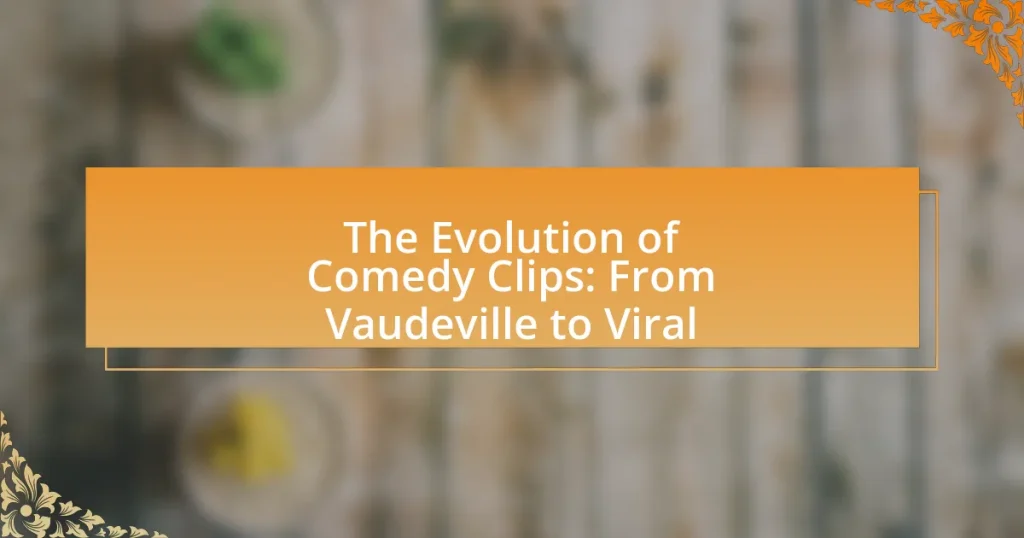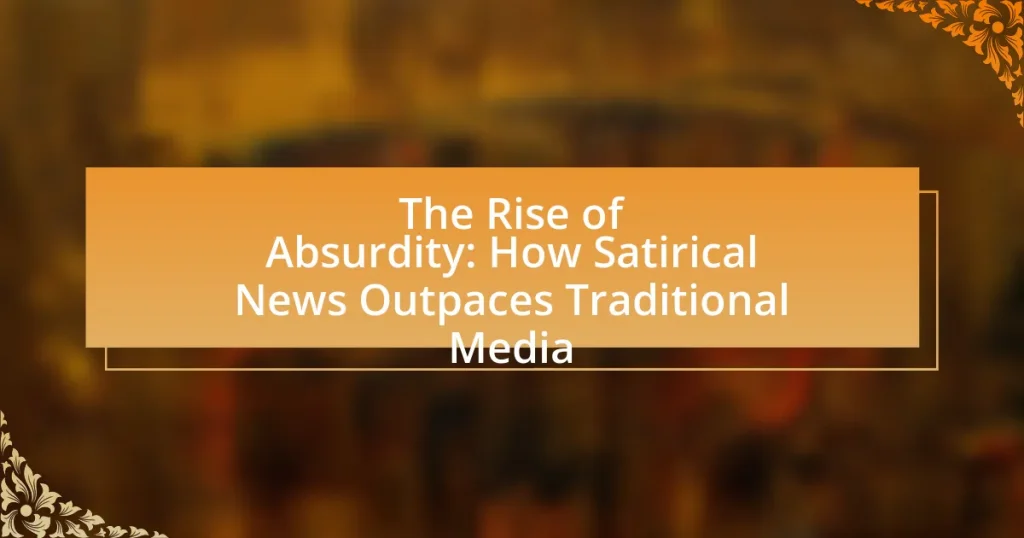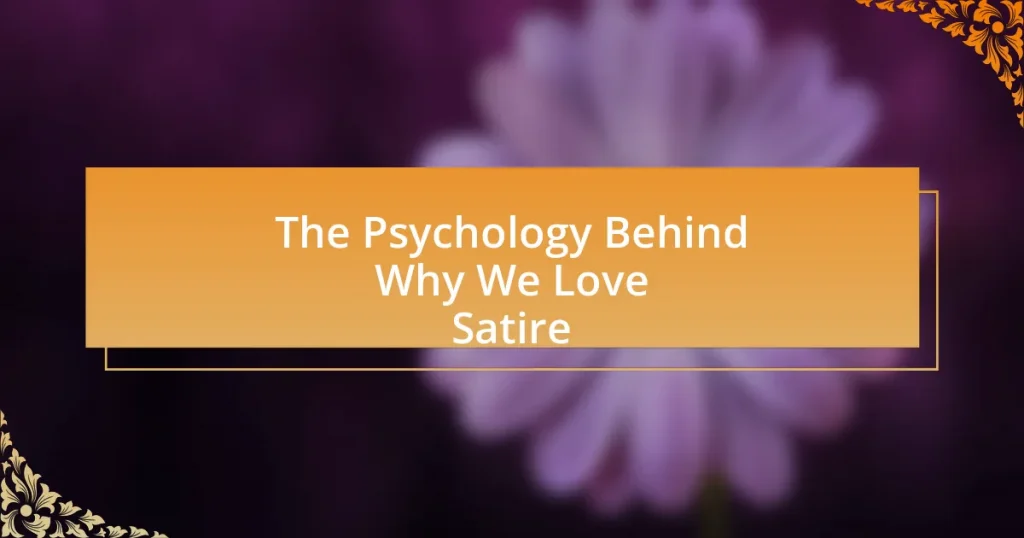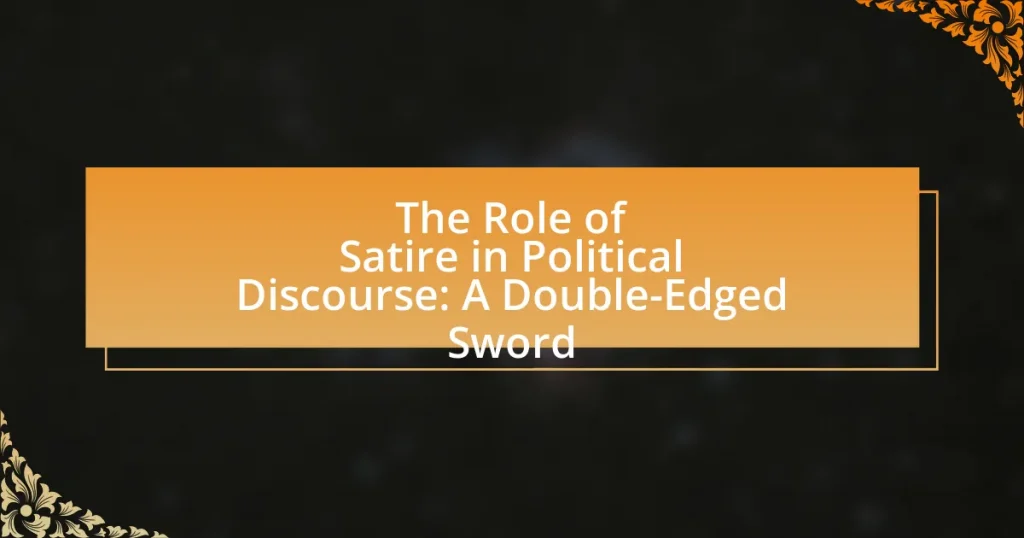The article examines the evolution of comedy clips, tracing their development from early vaudeville performances to contemporary viral videos on social media. It highlights key milestones, including the transition from live acts to silent films, the impact of television, and the rise of internet platforms like YouTube and TikTok. The discussion covers how technological advancements and changing audience preferences have shaped comedic content, emphasizing the significance of various styles such as sketch comedy and parody. Additionally, the article explores the cultural impact of comedy clips today, their role in shaping public opinion, and future trends influenced by emerging technologies like AI.

What is the Evolution of Comedy Clips?
The evolution of comedy clips spans from early vaudeville performances to contemporary viral videos on social media platforms. Initially, vaudeville showcased short comedic acts in theaters during the late 19th and early 20th centuries, emphasizing physical humor and slapstick. With the advent of film, comedy shorts became popular in the 1920s, featuring iconic characters like Charlie Chaplin and Buster Keaton, who utilized visual gags and situational comedy.
The introduction of television in the mid-20th century further transformed comedy clips, with sitcoms and sketch shows like “Saturday Night Live” presenting short comedic segments that reached wider audiences. The rise of the internet in the late 1990s and early 2000s led to the emergence of online platforms like YouTube, where creators began producing and sharing short comedic videos, often leveraging memes and cultural references.
Today, social media platforms such as TikTok and Instagram have revolutionized comedy clips, allowing users to create and share brief, engaging content that can go viral rapidly. This evolution reflects changing audience preferences and technological advancements, demonstrating how comedy adapts to new mediums while maintaining its core objective of entertaining.
How did comedy clips originate in the context of entertainment?
Comedy clips originated from the early 20th-century vaudeville performances, where short comedic acts were presented as part of a variety show format. These live performances featured comedians who delivered quick, humorous sketches or routines, which laid the groundwork for the concept of short comedic segments. As technology advanced, particularly with the advent of film and later television, these live acts were recorded and broadcast, allowing comedy clips to reach a wider audience. The transition from stage to screen enabled the creation of iconic short films and television skits, which became staples in entertainment. The rise of the internet and social media further transformed comedy clips, leading to the viral sharing of short, humorous videos, exemplified by platforms like YouTube and TikTok. This evolution reflects the ongoing adaptation of comedic content to fit new media formats while maintaining the essence of humor that originated in vaudeville.
What role did vaudeville play in shaping early comedy clips?
Vaudeville played a crucial role in shaping early comedy clips by establishing a format that emphasized short, humorous performances designed for quick audience engagement. This theatrical style, characterized by a variety of acts including slapstick, musical numbers, and comedic sketches, directly influenced the structure and pacing of early film comedy. The transition from live vaudeville performances to film allowed filmmakers to capture the essence of these acts, leading to the creation of silent comedy shorts that mirrored vaudeville’s rapid-fire humor and visual gags. Notably, comedians like Charlie Chaplin and Buster Keaton, who originated from vaudeville, brought these techniques to the screen, solidifying the connection between the two mediums and shaping the future of comedic storytelling in film.
How did silent films influence the development of comedy clips?
Silent films significantly influenced the development of comedy clips by establishing visual storytelling techniques that relied on physical humor and exaggerated expressions. Pioneers like Charlie Chaplin and Buster Keaton utilized slapstick comedy, which emphasized visual gags and timing, laying the groundwork for future comedic formats. The absence of synchronized sound in silent films necessitated a focus on visual elements, leading to the creation of memorable comedic scenarios that could be easily understood without dialogue. This emphasis on visual comedy directly informed the style of later comedy clips, particularly in television and online platforms, where quick, visual humor remains essential for audience engagement.
What are the key milestones in the evolution of comedy clips?
The key milestones in the evolution of comedy clips include the emergence of vaudeville in the late 19th century, the advent of silent film comedies in the early 20th century, the introduction of sound in films with “The Jazz Singer” in 1927, the rise of television sitcoms in the 1950s, the development of sketch comedy shows like “Saturday Night Live” in the 1970s, and the explosion of internet platforms in the 2000s that popularized short-form comedy clips. Each of these milestones significantly transformed how comedy was created and consumed, reflecting changes in technology and audience preferences. For instance, vaudeville acts laid the groundwork for comedic performance, while the transition to television allowed for broader reach and the establishment of iconic comedic formats. The internet further revolutionized comedy by enabling rapid sharing and viral trends, exemplified by platforms like YouTube and TikTok, which have become central to contemporary comedic expression.
How did the advent of television change comedy clips?
The advent of television transformed comedy clips by providing a new platform for visual storytelling and wider audience reach. Television allowed comedians to perform in front of millions, leading to the creation of iconic shows like “Saturday Night Live,” which popularized sketch comedy and short comedic segments. This shift enabled the rapid dissemination of comedic content, as clips could be broadcasted and shared, reaching diverse demographics and fostering a shared cultural experience. The format of comedy clips evolved to include timed punchlines and visual gags tailored for the screen, enhancing comedic delivery and engagement.
What impact did the internet have on the distribution of comedy clips?
The internet significantly transformed the distribution of comedy clips by enabling instant access and global sharing. Prior to the internet, comedy clips were primarily disseminated through television and live performances, limiting their reach. With platforms like YouTube and social media, comedians can now upload and share their content directly with audiences worldwide, resulting in a democratization of comedy. This shift has led to increased visibility for diverse comedic voices and styles, as evidenced by the rise of viral sensations and the ability for clips to be shared millions of times within hours. The internet’s role in this evolution is underscored by statistics showing that over 500 hours of video are uploaded to YouTube every minute, illustrating the vast scale of content distribution available to comedians today.

How have comedy clips transformed over time?
Comedy clips have transformed significantly over time, evolving from live performances in vaudeville to short, shareable videos on social media platforms. In the early 20th century, vaudeville showcased comedic acts in theaters, emphasizing physical humor and live audience interaction. With the advent of television in the mid-20th century, comedy sketches became popular, allowing for scripted content and wider reach. The rise of the internet in the late 1990s and early 2000s introduced platforms like YouTube, which enabled creators to produce and distribute short comedy clips easily. Today, social media platforms such as TikTok and Instagram have further accelerated this transformation, emphasizing brevity and virality, with clips often lasting only a few seconds and designed for rapid consumption. This evolution reflects changing audience preferences and technological advancements, highlighting the shift from traditional, longer formats to quick, engaging content that can be shared globally.
What technological advancements have influenced comedy clips?
Technological advancements such as the internet, smartphones, and social media platforms have significantly influenced comedy clips. The internet has enabled instant access to a global audience, allowing comedians to share their work widely and rapidly. Smartphones have facilitated the creation and sharing of video content, making it easier for anyone to produce and distribute comedy clips. Social media platforms like TikTok and Instagram have further transformed comedy by promoting short, engaging formats that cater to user preferences for quick entertainment. These advancements have led to the rise of viral comedy, where clips can gain millions of views in a short time, reshaping how comedy is consumed and created.
How has editing software changed the production of comedy clips?
Editing software has significantly transformed the production of comedy clips by enabling faster, more efficient editing processes and enhancing creative possibilities. With tools like Adobe Premiere Pro and Final Cut Pro, creators can easily manipulate video and audio, allowing for precise timing and pacing that are crucial in comedy. This technological advancement has led to the rise of quick cuts, visual effects, and seamless transitions, which enhance comedic timing and audience engagement. Additionally, the accessibility of user-friendly editing software has democratized content creation, allowing aspiring comedians to produce high-quality clips without the need for extensive training or expensive equipment. As a result, the landscape of comedy has shifted, with a greater variety of voices and styles emerging, reflecting the diverse nature of digital platforms.
What role do social media platforms play in the dissemination of comedy clips?
Social media platforms serve as primary channels for the dissemination of comedy clips, enabling rapid sharing and widespread visibility. These platforms, such as TikTok, Instagram, and Twitter, allow users to upload, share, and engage with short comedic content, facilitating viral trends. For instance, TikTok’s algorithm promotes content based on user interaction, leading to millions of views for popular comedy clips within hours. According to a study by the Pew Research Center, 69% of adults in the U.S. use social media, highlighting its significant role in shaping entertainment consumption, including comedy. This accessibility and engagement foster a community where comedic content can be easily created, shared, and adapted, further amplifying its reach and impact.
What are the different styles of comedy clips that have emerged?
Different styles of comedy clips that have emerged include sketch comedy, stand-up snippets, parody, and situational comedy. Sketch comedy features short, scripted scenes often highlighting absurd situations or characters, while stand-up snippets showcase comedians performing live routines, focusing on observational humor. Parody involves imitating and exaggerating existing media or cultural phenomena for comedic effect. Situational comedy, or sitcom-style clips, revolves around humorous scenarios involving recurring characters in relatable settings. These styles reflect the diverse approaches to humor that have evolved with advancements in media and audience preferences.
How do sketch comedies differ from stand-up clips?
Sketch comedies differ from stand-up clips primarily in their format and presentation style. Sketch comedies consist of scripted scenes featuring multiple characters and scenarios, often with a narrative structure, while stand-up clips feature a single comedian performing live, delivering jokes and anecdotes directly to an audience. The scripted nature of sketch comedies allows for elaborate setups and character interactions, as seen in shows like “Saturday Night Live,” which often satirize current events through various sketches. In contrast, stand-up comedy relies on the comedian’s personal delivery and timing, as exemplified by performers like Dave Chappelle, who engage audiences through storytelling and observational humor.
What is the significance of parody and satire in comedy clips?
Parody and satire are significant in comedy clips as they serve to critique societal norms and cultural phenomena through humor. By mimicking and exaggerating recognizable elements, parody allows audiences to reflect on the absurdities of the original subjects, while satire uses wit to expose flaws and provoke thought about social issues. Historical examples include “Saturday Night Live,” which has utilized parody to comment on political events, influencing public perception and discourse. This dual function of entertainment and critique makes parody and satire essential tools in the evolution of comedy clips, enabling them to resonate with audiences and foster dialogue.
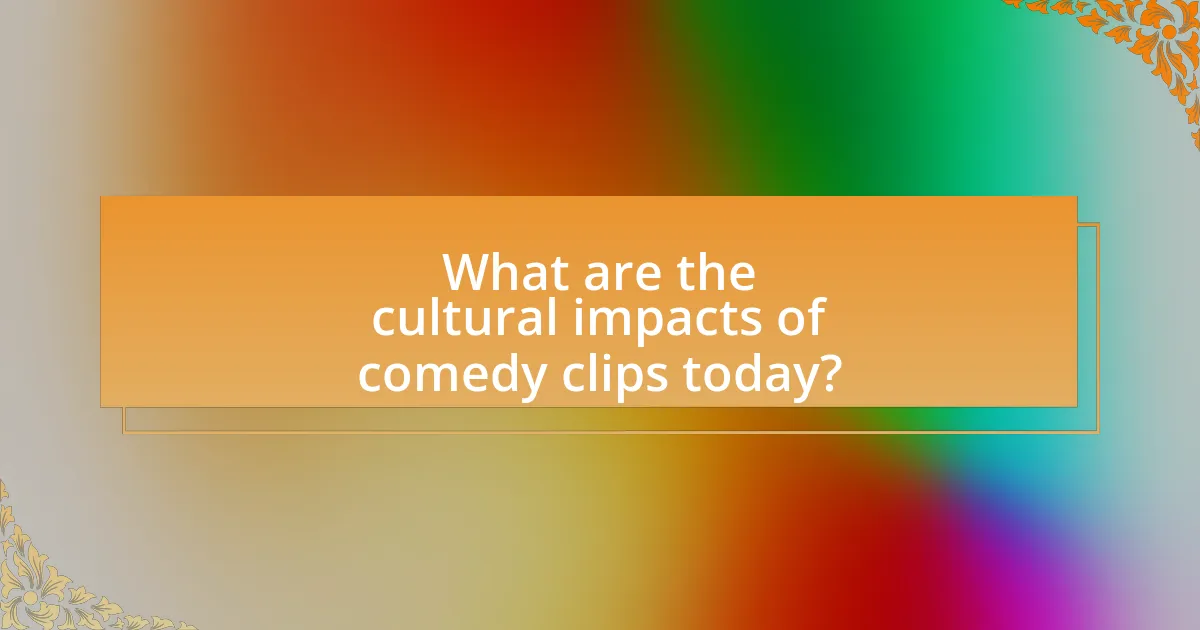
What are the cultural impacts of comedy clips today?
Comedy clips today significantly influence cultural discourse by shaping societal norms, providing commentary on current events, and fostering community through shared humor. These clips often reflect and challenge cultural values, as seen in viral videos that address social issues like inequality or mental health, thus promoting awareness and dialogue. For instance, platforms like TikTok and YouTube have enabled diverse voices to reach wide audiences, allowing marginalized perspectives to gain visibility. Research indicates that humor can enhance social cohesion, as people often bond over shared comedic experiences, reinforcing group identity. This cultural impact is evident in the way comedy clips have become a staple in social media, influencing trends, language, and even political movements, as seen in the use of satire to critique public figures and policies.
How do comedy clips reflect societal norms and issues?
Comedy clips reflect societal norms and issues by using humor to critique and highlight cultural values, behaviors, and conflicts. These clips often address topics such as race, gender, politics, and social justice, making them a mirror of contemporary societal dynamics. For instance, shows like “Saturday Night Live” and viral clips on platforms like TikTok frequently parody political figures and social trends, revealing public sentiment and sparking discussions about pressing issues. Research indicates that humor can serve as a coping mechanism and a tool for social commentary, allowing audiences to engage with complex subjects in a more accessible way.
What role do comedy clips play in shaping public opinion?
Comedy clips significantly influence public opinion by providing a platform for satire and commentary on social and political issues. These clips often simplify complex topics, making them more accessible and engaging for audiences. Research indicates that humor can enhance the retention of information and increase the likelihood of sharing content, thereby amplifying its reach. For example, a study published in the journal “Communication Research” found that humorous political satire can effectively shape viewers’ attitudes and perceptions, particularly among younger demographics who are more likely to consume content online. This demonstrates that comedy clips not only entertain but also serve as a powerful tool for shaping societal views and encouraging discourse.
How do comedy clips contribute to cultural conversations?
Comedy clips contribute to cultural conversations by providing a platform for satire and commentary on societal issues. These clips often reflect and critique cultural norms, political events, and social behaviors, making complex topics more accessible and engaging. For instance, shows like “Saturday Night Live” have historically used comedic sketches to address political satire, influencing public opinion and sparking discussions around current events. Research indicates that humor can enhance the retention of information and encourage dialogue, as seen in studies published in the Journal of Communication, which highlight how comedic content can facilitate conversations about sensitive topics.
What are the future trends in comedy clips?
Future trends in comedy clips include increased use of artificial intelligence for content creation, a rise in interactive and immersive formats, and the integration of social issues into comedic narratives. AI tools are being developed to assist comedians in generating jokes and scripts, enhancing creativity and efficiency. Interactive formats, such as audience participation through live streaming platforms, are gaining popularity, allowing viewers to influence the content in real-time. Additionally, comedians are increasingly addressing social issues, reflecting a shift towards more meaningful and relatable humor, as seen in the works of comedians like Hannah Gadsby and John Oliver, who blend comedy with commentary on societal topics.
How might emerging technologies like AI influence comedy clips?
Emerging technologies like AI are likely to significantly influence comedy clips by enhancing content creation, personalization, and audience engagement. AI algorithms can analyze viewer preferences and trends, allowing creators to tailor comedic content that resonates with specific demographics. For instance, AI-driven tools can generate scripts, suggest punchlines, or even create deepfake performances that mimic popular comedians, thereby expanding creative possibilities. Additionally, platforms like TikTok and Instagram utilize AI to optimize content distribution, ensuring that comedy clips reach the right audience at the right time, which can lead to increased virality. This shift towards data-driven comedy not only streamlines production but also fosters a more interactive experience for viewers, as AI can facilitate real-time feedback and engagement through comments and reactions.
What can creators do to stay relevant in the evolving landscape of comedy clips?
Creators can stay relevant in the evolving landscape of comedy clips by continuously adapting their content to current trends and audience preferences. This involves actively engaging with their audience through social media platforms, analyzing viewer feedback, and experimenting with new formats and styles. For instance, creators who leverage data analytics to understand what resonates with viewers can tailor their content accordingly, leading to increased engagement. Additionally, collaborating with other creators can introduce fresh perspectives and expand their reach, as seen in successful partnerships that have led to viral content.
What best practices should creators follow when producing comedy clips?
Creators should focus on clear storytelling, relatable humor, and concise editing when producing comedy clips. Clear storytelling ensures that the audience can easily follow the narrative, which is essential for comedic timing and punchlines. Relatable humor resonates with viewers, increasing engagement and shareability; studies show that humor based on shared experiences is more likely to be appreciated. Concise editing is crucial, as attention spans are short; research indicates that clips under two minutes perform better on social media platforms. By adhering to these best practices, creators can enhance the effectiveness and reach of their comedy clips.
